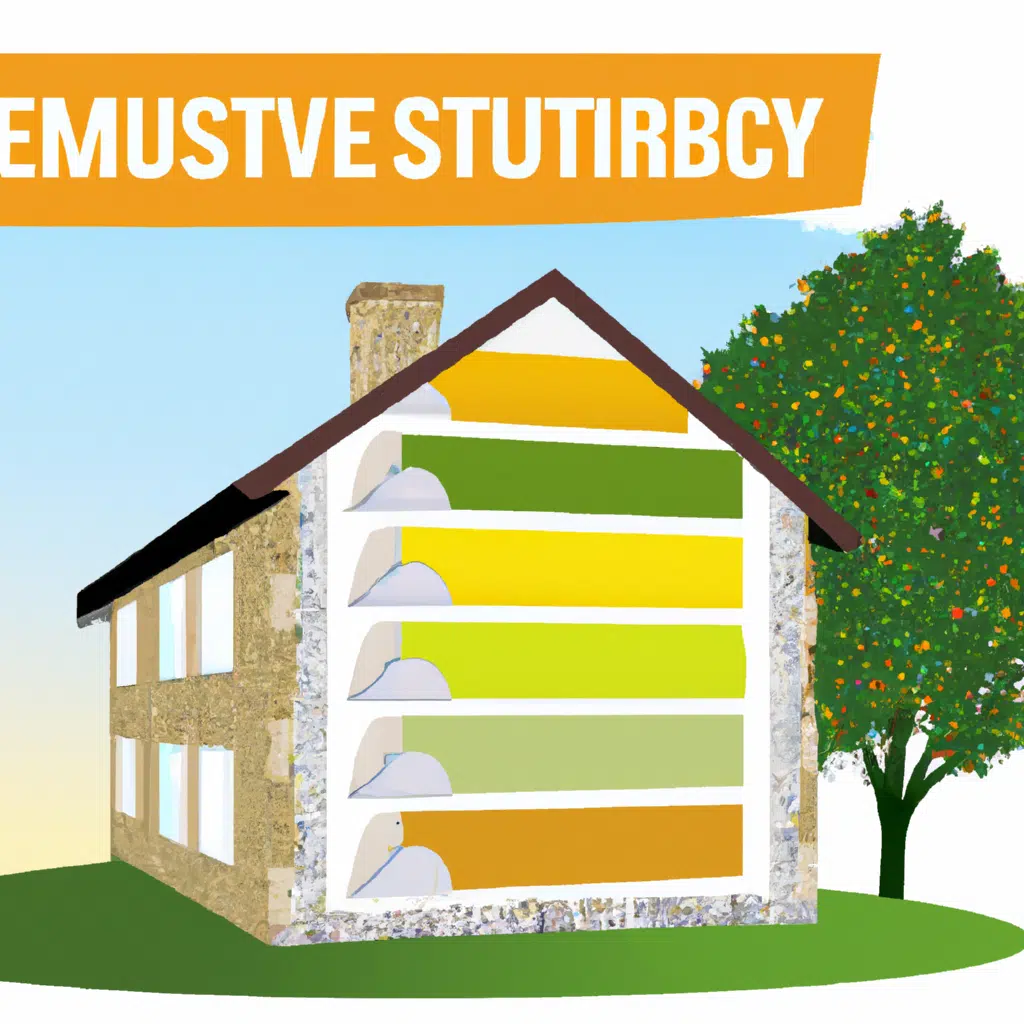Are you planning to build a sustainable home or renovate your existing one? One of the most important decisions you will make is choosing the right insulation. Insulation is crucial for maintaining a comfortable indoor temperature and reducing energy consumption. In this article, we will guide you through the process of choosing the right insulation for a sustainable home.

Why Is Insulation Important for a Sustainable Home?
Insulation is essential for a sustainable home because it helps reduce energy consumption and greenhouse gas emissions. Without proper insulation, heat can escape through the walls, roof, and floor, leading to higher energy bills and increased carbon footprint.
By choosing the right insulation, you can reduce energy consumption, lower your carbon footprint, and create a comfortable living space that is warm in the winter and cool in the summer.
Factors to Consider When Choosing Insulation
Choosing the right insulation depends on several factors, including the climate, building design, and budget. Here are the most important factors to consider when choosing insulation for a sustainable home:
Climate
The climate is one of the most important factors to consider when choosing insulation. If you live in a cold climate, you will need insulation with a higher R-value, which measures the insulation’s ability to resist heat flow. If you live in a warm climate, you will need insulation with a lower R-value.
Building Design
The building design also plays a crucial role in choosing insulation. The type of insulation you choose will depend on the building’s construction, such as the wall thickness, roof design, and framing type.
Sustainability
Sustainability is also an important factor to consider when choosing insulation. Look for insulation made from natural and renewable materials, such as wool, cotton, or cellulose. These materials are eco-friendly and have a low carbon footprint.
Budget
Finally, your budget will also determine the type of insulation you choose. While natural and eco-friendly materials may be more expensive, they offer long-term benefits, such as energy savings and durability.
Types of Insulation
There are several types of insulation available, each with its own advantages and disadvantages. Here are the most common types of insulation for a sustainable home:
Fiberglass Insulation
Fiberglass insulation is the most common type of insulation used in homes. It is made from spun glass fibers and is available in batts or rolls. Fiberglass insulation is affordable, easy to install, and has a high R-value.
However, fiberglass insulation is not eco-friendly and can cause skin irritation and respiratory problems if not installed properly.
Cellulose Insulation
Cellulose insulation is made from recycled paper and has a high R-value. It is eco-friendly, fire-resistant, and provides excellent sound insulation.
However, cellulose insulation is more expensive than fiberglass insulation and can settle over time, reducing its effectiveness.
Spray Foam Insulation
Spray foam insulation is a popular choice for sustainable homes because it provides excellent insulation and air sealing. It is made from polyurethane foam and is sprayed into the walls, ceiling, or floor.
However, spray foam insulation is more expensive than other types of insulation and can be difficult to install. It can also release harmful chemicals if not installed properly.
Wool Insulation
Wool insulation is made from natural sheep’s wool and is eco-friendly, fire-resistant, and has a high R-value. It is also effective at reducing noise pollution.
However, wool insulation is more expensive than other types of insulation and can be difficult to find.
Conclusion
Choosing the right insulation is essential for building a sustainable home. Consider the climate, building design, sustainability, and budget when choosing insulation for your home. Fiberglass insulation is the most common type of insulation, but cellulose, spray foam, and wool insulation are also excellent options. By choosing the right insulation, you can reduce energy consumption, lower your carbon footprint, and create a comfortable living space.
